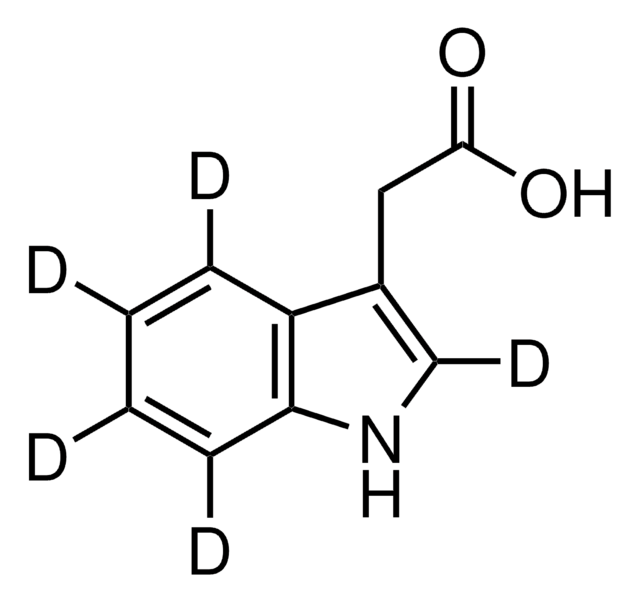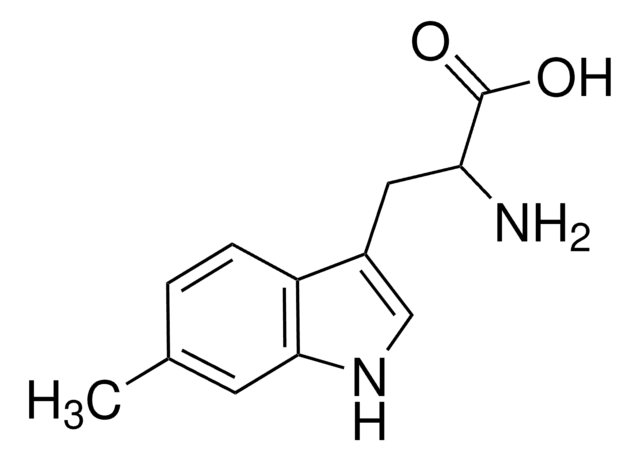100870
Bis(4-chlorophenyl)acetic acid
98%
Sinónimos:
4,4′-DDA
Iniciar sesiónpara Ver la Fijación de precios por contrato y de la organización
About This Item
Fórmula lineal:
(ClC6H4)2CHCO2H
Número de CAS:
Peso molecular:
281.13
Número CE:
Número MDL:
Código UNSPSC:
12352100
ID de la sustancia en PubChem:
Productos recomendados
Ensayo
98%
mp
167-169 °C (lit.)
grupo funcional
carboxylic acid
chloro
cadena SMILES
OC(=O)C(c1ccc(Cl)cc1)c2ccc(Cl)cc2
InChI
1S/C14H10Cl2O2/c15-11-5-1-9(2-6-11)13(14(17)18)10-3-7-12(16)8-4-10/h1-8,13H,(H,17,18)
Clave InChI
YIOCIFXUGBYCJR-UHFFFAOYSA-N
Palabra de señalización
Warning
Frases de peligro
Consejos de prudencia
Clasificaciones de peligro
Acute Tox. 4 Dermal - Acute Tox. 4 Inhalation - Acute Tox. 4 Oral - Carc. 2
Código de clase de almacenamiento
11 - Combustible Solids
Clase de riesgo para el agua (WGK)
WGK 3
Punto de inflamabilidad (°F)
Not applicable
Punto de inflamabilidad (°C)
Not applicable
Equipo de protección personal
dust mask type N95 (US), Eyeshields, Gloves
Elija entre una de las versiones más recientes:
¿Ya tiene este producto?
Encuentre la documentación para los productos que ha comprado recientemente en la Biblioteca de documentos.
W K Nichols et al.
Drug metabolism and disposition: the biological fate of chemicals, 23(5), 595-599 (1995-05-01)
Isolated rabbit Clara cells and a transformed human bronchial epithelial cell line, BEAS-2B, were used to investigate the mechanism of cytotoxicity of 1,1-dichloro-2,2-bis(p-chlorophenyl)ethane (DDD), a persistent insecticide and stable metabolite of 1,1,1-trichloro-2,2- bis(p-chlorophenyl)ethane. Both BEAS-2B cells and rabbit Clara cells
Karsten Hemmrich et al.
Cytotherapy, 12(4), 547-553 (2010-04-08)
Obesity is correlated with chronic low-grade inflammation. Thus the induction of inflammation could be used to stimulate adipose tissue formation in tissue-engineering approaches. As nitric oxide (NO) is a key regulator of inflammation, we investigated the effect of NO and
J P Klerx et al.
International journal of immunopharmacology, 8(1), 47-52 (1986-01-01)
The anti-complementary effects of the surface-active immunological adjuvants dimethyldioctadecylammonium bromide (DDA) and pluronic polyols L101 and L121 were investigated in the mouse system. All three adjuvants showed complement (C)-inactivating effects. DDA caused a time- and dose-dependent reduction of alternative pathway
J Guilford et al.
Drug and chemical toxicology, 9(3-4), 239-252 (1986-01-01)
The possibility that lead could affect the metabolism of the insecticide 1,1-dichloro-2, 2-bis(p-chlorophenyl)ethane, DDD, was examined by studies of the effects of chronic oral Pb treatment on DDD conversion to 2,2-bis(p-chlorophenyl)acetic acid, DDA. Rats were given either distilled deionized water
H van Dijk et al.
Methods and findings in experimental and clinical pharmacology, 8(3), 189-193 (1986-03-01)
A novel, sensitive system to determine immunological adjuvant activity is presented. It is based on the direct haemagglutinin response of mice to neuraminidase-treated sheep red blood cells (asialo-SRBC) seven days after i.p. immunization. For two model adjuvants it is shown
Nuestro equipo de científicos tiene experiencia en todas las áreas de investigación: Ciencias de la vida, Ciencia de los materiales, Síntesis química, Cromatografía, Analítica y muchas otras.
Póngase en contacto con el Servicio técnico










